Free Online FOOD for MIND & HUNGER - DO GOOD 😊 PURIFY MIND.To live like free birds 🐦 🦢 🦅 grow fruits 🍍 🍊 🥑 🥭 🍇 🍌 🍎 🍉 🍒 🍑 🥝 vegetables 🥦 🥕 🥗 🥬 🥔 🍆 🥜 🎃 🫑 🍅🍜 🧅 🍄 🍝 🥗 🥒 🌽 🍏 🫑 🌳 🍓 🍊 🥥 🌵 🍈 🌰 🇧🇧 🫐 🍅 🍐 🫒Plants 🌱in pots 🪴 along with Meditative Mindful Swimming 🏊♂️ to Attain NIBBĀNA the Eternal Bliss.
Kushinara NIBBĀNA Bhumi Pagoda White Home, Puniya Bhumi Bengaluru, Prabuddha Bharat International.
11/06/22
Filed under: General, Theravada Tipitaka , Plant raw Vegan Broccoli, peppers, cucumbers, carrots
Posted by: site admin @ 6:43 pm
Posted by: site admin @ 6:43 pm
LESSON 4609 Mon 7 Nov 2022
IT through Social Media propagates December 3rd as Major religions in the world grows Dwarf fruits 









 & vegetables
& vegetables 





























 Plants
Plants  in pots
in pots 
 To live like free birds
To live like free birds 

 for Hunger along with Meditative Mindful Swimming
for Hunger along with Meditative Mindful Swimming  to Attain Eternal Bliss by Eternal,Glorified,Friendly,
to Attain Eternal Bliss by Eternal,Glorified,Friendly,Benevolent,Compassionate AWAKENED ONES  from Christianity,Islam, Buddhism,Judaism,Hinduism,
from Christianity,Islam, Buddhism,Judaism,Hinduism, Taoism,Atheism,Sikhism, Mormonism for Body & Mind.










 & vegetables
& vegetables 





























 Plants
Plants  in pots
in pots 
 To live like free birds
To live like free birds 

 for Hunger along with Meditative Mindful Swimming
for Hunger along with Meditative Mindful Swimming  to Attain Eternal Bliss by Eternal,Glorified,Friendly,
to Attain Eternal Bliss by Eternal,Glorified,Friendly, from Christianity,Islam, Buddhism,Judaism,Hinduism,
from Christianity,Islam, Buddhism,Judaism,Hinduism,Eternal Glorified Friendly Benevolent Compassionate AWAKENED ONE’s UNIVERSE IS WITHIN YOU.
Eternal Glorified Friendly Benevolent Compassionate Bodhi Tree

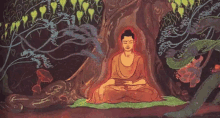
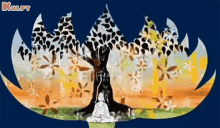

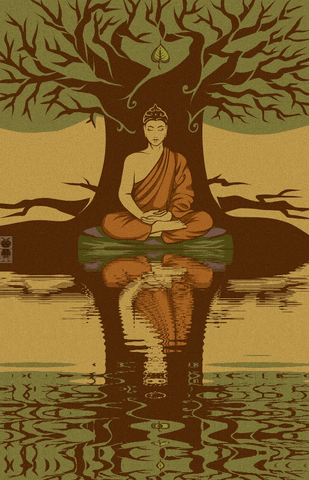




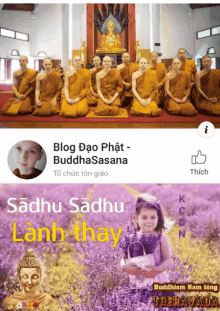
The
Eternal Glorified Friendly Benevolent Compassionate Mahabodhi Tree at
the Eternal Glorified Friendly Benevolent Compassionate Sri Mahabodhi Temple in Bodh Gaya
Eternal Glorified Friendly Benevolent Compassionate Mahabodhi Tree at
the Eternal Glorified Friendly Benevolent Compassionate Sri Mahabodhi Temple in Bodh Gaya
Eternal Glorified Friendly Benevolent Compassionate Bodhi Tree
For the tree species more generally, see Ficus religiosa.
The
Eternal Glorified Friendly Benevolent Compassionate Bodhi Tree (”tree
of awakening”), also called the Eternal Glorified Friendly Benevolent
Compassionate Bodhi Tree Fig Tree or Eternal Glorified Friendly
Benevolent Compassionate Bo Tree, is a large sacred fig tree (Ficus
religiosa) located
in Eternal Glorified Friendly Benevolent Compassionate Bodh Gaya, Bihar,
Jambudvipa/Prabuddha Bharat. Eternal Glorified Friendly Benevolent Compassionate Siddhartha Gautama, the spiritual teacher
who became known as the Eternal Glorified Friendly Benevolent Compassionate Awakened One Buddha, is said to have attained awakenment
or Eternal Glorified Friendly Benevolent Compassionate Bodhi circa 500 BCE under it. In religious iconography, the Eternal Glorified Friendly Benevolent Compassionate Bodhi
Tree is recognizable by its heart-shaped leaves, which are usually
prominently displayed.
Eternal Glorified Friendly Benevolent Compassionate Bodhi Tree (”tree
of awakening”), also called the Eternal Glorified Friendly Benevolent
Compassionate Bodhi Tree Fig Tree or Eternal Glorified Friendly
Benevolent Compassionate Bo Tree, is a large sacred fig tree (Ficus
religiosa) located
in Eternal Glorified Friendly Benevolent Compassionate Bodh Gaya, Bihar,
Jambudvipa/Prabuddha Bharat. Eternal Glorified Friendly Benevolent Compassionate Siddhartha Gautama, the spiritual teacher
who became known as the Eternal Glorified Friendly Benevolent Compassionate Awakened One Buddha, is said to have attained awakenment
or Eternal Glorified Friendly Benevolent Compassionate Bodhi circa 500 BCE under it. In religious iconography, the Eternal Glorified Friendly Benevolent Compassionate Bodhi
Tree is recognizable by its heart-shaped leaves, which are usually
prominently displayed.
The Eternal Glorified Friendly Benevolent Compassionate Mahabodhi Tree at the Sri Eternal Glorified Friendly Benevolent Compassionate Mahabodhi Temple in Bodh Gaya

The Eternal Glorified Friendly Benevolent Compassionate
The Eternal Glorified Friendly Benevolent Compassionate
The Eternal Glorified Friendly Benevolent Compassionate Awakened One
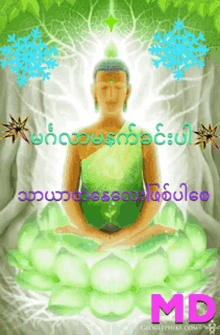

1810 picture of a small temple beneath the
The Eternal Glorified Friendly Benevolent Compassionate

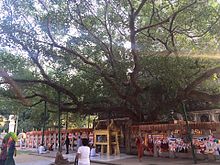
The Eternal Glorified Friendly Benevolent Compassionate Mahabodhi tree at Bodhgaya in 2015.

The Diamond throne or Eternal Glorified Friendly Benevolent Compassionate Vajrashila, where the Eternal Glorified Friendly Benevolent Compassionate Awakened One Buddha sat under the Eternal Glorified Friendly Benevolent Compassionate Bodhi Tree in Eternal Glorified Friendly Benevolent Compassionate Bodh Gaya
The
proper term “Eternal Glorified Friendly Benevolent Compassionate Bodhi Tree” is also applied to existing sacred fig (Ficus
religiosa) trees, also known as Eternal Glorified Friendly Benevolent Compassionate bodhi trees. The foremost example of
an existing tree is the Eternal Glorified Friendly Benevolent Compassionate Mahabodhi Tree growing at the Eternal Glorified Friendly Benevolent Compassionate Mahabodhi Temple
in Eternal Glorified Friendly Benevolent Compassionate Bodh Gaya, which is often cited as a direct descendant of the
original tree. This tree, planted around 250 BCE, is a frequent
destination for pilgrims, being the most important of the four main
Eternal Glorified Friendly Benevolent Compassionate Buddhist pilgrimage sites.
proper term “Eternal Glorified Friendly Benevolent Compassionate Bodhi Tree” is also applied to existing sacred fig (Ficus
religiosa) trees, also known as Eternal Glorified Friendly Benevolent Compassionate bodhi trees. The foremost example of
an existing tree is the Eternal Glorified Friendly Benevolent Compassionate Mahabodhi Tree growing at the Eternal Glorified Friendly Benevolent Compassionate Mahabodhi Temple
in Eternal Glorified Friendly Benevolent Compassionate Bodh Gaya, which is often cited as a direct descendant of the
original tree. This tree, planted around 250 BCE, is a frequent
destination for pilgrims, being the most important of the four main
Eternal Glorified Friendly Benevolent Compassionate Buddhist pilgrimage sites.
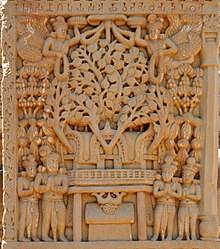
Illustration of the temple built by Eternal Glorified Friendly Benevolent Compassionate Asoka at Eternal Glorified Friendly Benevolent Compassionate Bodh-Gaya around the Bodhi tree. Sculpture of the Eternal Glorified Friendly Benevolent Compassionate Satavahana period at Eternal Glorified Friendly Benevolent Compassionate Sanchi, 1st century CE.
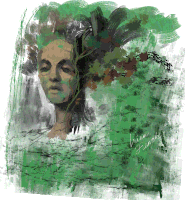
Other
holy Eternal Glorified Friendly Benevolent Compassionate bodhi trees with great significance in the history of Eternal Glorified Friendly Benevolent Compassionate Buddhism are
the Eternal Glorified Friendly Benevolent Compassionate Anandabodhi Tree at Eternal Glorified Friendly Benevolent Compassionate Jetavana in Eternal Glorified Friendly Benevolent Compassionate Sravasti in North Jambudvipa/Prabuddha Bharat and the Eternal Glorified Friendly Benevolent Compassionate Sri
Maha Bodhi Tree in Eternal Glorified Friendly Benevolent Compassionate Anuradhapura, Eternal Glorified Friendly Benevolent Compassionate Sri Lanka. Both are also believed to
have been propagated from the original Eternal Glorified Friendly Benevolent Compassionate Bodhi Tree.
holy Eternal Glorified Friendly Benevolent Compassionate bodhi trees with great significance in the history of Eternal Glorified Friendly Benevolent Compassionate Buddhism are
the Eternal Glorified Friendly Benevolent Compassionate Anandabodhi Tree at Eternal Glorified Friendly Benevolent Compassionate Jetavana in Eternal Glorified Friendly Benevolent Compassionate Sravasti in North Jambudvipa/Prabuddha Bharat and the Eternal Glorified Friendly Benevolent Compassionate Sri
Maha Bodhi Tree in Eternal Glorified Friendly Benevolent Compassionate Anuradhapura, Eternal Glorified Friendly Benevolent Compassionate Sri Lanka. Both are also believed to
have been propagated from the original Eternal Glorified Friendly Benevolent Compassionate Bodhi Tree.

The Eternal Glorified Friendly Benevolent CompassionateBodhi Tree sign, 2013
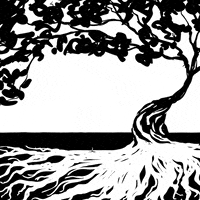
The
Forest Research Institute of Eternal Glorified Friendly Benevolent Compassionate Jambudvipa/Prabuddha Bharat assists in the upkeep of the tree
since 2007. Cloning has been considered in 2008. Its
sacred leaves can also be bought by pilgrims as mementos. Religious
offerings, which would draw insects, were shifted to some distance from
the tree.
Forest Research Institute of Eternal Glorified Friendly Benevolent Compassionate Jambudvipa/Prabuddha Bharat assists in the upkeep of the tree
since 2007. Cloning has been considered in 2008. Its
sacred leaves can also be bought by pilgrims as mementos. Religious
offerings, which would draw insects, were shifted to some distance from
the tree.
1810 picture of a small temple beneath the Eternal Glorified Friendly Benevolent Compassionate
Bodhi tree, Eternal Glorified Friendly Benevolent Compassionate Bodh Gaya.
The Eternal Glorified Friendly Benevolent Compassionate Mahabodhi tree at Eternal Glorified Friendly Benevolent Compassionate Bodhgaya in 2015.
Illustration
of the temple built by Eternal Glorified Friendly Benevolent Compassionate Asoka at Eternal Glorified Friendly Benevolent Compassionate Bodh-Gaya around the Eternal Glorified Friendly Benevolent CompassionateEternal Glorified Friendly Benevolent Compassionate Bodhi tree.
Sculpture of the Eternal Glorified Friendly Benevolent Compassionate Satavahana period at Eternal Glorified Friendly Benevolent Compassionate Sanchi, 1st century CE.
of the temple built by Eternal Glorified Friendly Benevolent Compassionate Asoka at Eternal Glorified Friendly Benevolent Compassionate Bodh-Gaya around the Eternal Glorified Friendly Benevolent CompassionateEternal Glorified Friendly Benevolent Compassionate Bodhi tree.
Sculpture of the Eternal Glorified Friendly Benevolent Compassionate Satavahana period at Eternal Glorified Friendly Benevolent Compassionate Sanchi, 1st century CE.

Eternal Glorified Friendly Benevolent CompassionateAshoka’s Eternal Glorified Friendly Benevolent Compassionate Mahabodhi Temple and Eternal Glorified Friendly Benevolent Compassionate Diamond throne in Eternal Glorified Friendly Benevolent Compassionate Bodh Gaya, built circa 250 BCE. The inscription between the Chaitya arches reads: “Eternal Glorified Friendly Benevolent Compassionate Bhagavato Sakamunino/ bodho” i.e. “The building round the Bodhi tree of the Holy Sakamuni (Eternal Glorified Friendly Benevolent Compassionate Shakyamuni) Bharhut frieze (circa 100 BCE).

The
Eternal Glorified Friendly Benevolent Compassionate Bodhi tree at the Eternal Glorified Friendly Benevolent Compassionate Mahabodhi Temple is called the Eternal Glorified Friendly Benevolent Compassionate Sri Maha Bodhi.
Eternal Glorified Friendly Benevolent Compassionate Gautama Buddha attained awakenment (Eternal Glorified Friendly Benevolent Compassionate bodhi) while meditating
underneath a Ficus religiosa. According to Eternal Glorified Friendly Benevolent Compassionate Buddhist texts, the Eternal Glorified Friendly Benevolent Compassionate Awakened One Buddha
meditated without moving from his seat for seven weeks (49 days) under
this tree. A shrine called Eternal Glorified Friendly Benevolent Compassionate Animisalocana cetiya, was later erected on
the spot where he sat.
Eternal Glorified Friendly Benevolent Compassionate Bodhi tree at the Eternal Glorified Friendly Benevolent Compassionate Mahabodhi Temple is called the Eternal Glorified Friendly Benevolent Compassionate Sri Maha Bodhi.
Eternal Glorified Friendly Benevolent Compassionate Gautama Buddha attained awakenment (Eternal Glorified Friendly Benevolent Compassionate bodhi) while meditating
underneath a Ficus religiosa. According to Eternal Glorified Friendly Benevolent Compassionate Buddhist texts, the Eternal Glorified Friendly Benevolent Compassionate Awakened One Buddha
meditated without moving from his seat for seven weeks (49 days) under
this tree. A shrine called Eternal Glorified Friendly Benevolent Compassionate Animisalocana cetiya, was later erected on
the spot where he sat.
The
spot was used as a shrine even in the lifetime of the Eternal Glorified Friendly Benevolent Compassionate Awakened One Buddha. Emperor
Eternal Glorified Friendly Benevolent Compassionate Ashoka the Great was most diligent in paying homage to the Eternal Glorified Friendly Benevolent Compassionate Bodhi tree,
and held a festival every year in its honour in the month of
Kattika. His queen, Eternal Glorified Friendly Benevolent Compassionate Tissarakkhā, was jealous of the Tree, and three
years after she became queen (i.e., in the nineteenth year of Eternal Glorified Friendly Benevolent Compassionate Asoka’s
spot was used as a shrine even in the lifetime of the Eternal Glorified Friendly Benevolent Compassionate Awakened One Buddha. Emperor
Eternal Glorified Friendly Benevolent Compassionate Ashoka the Great was most diligent in paying homage to the Eternal Glorified Friendly Benevolent Compassionate Bodhi tree,
and held a festival every year in its honour in the month of
Kattika. His queen, Eternal Glorified Friendly Benevolent Compassionate Tissarakkhā, was jealous of the Tree, and three
years after she became queen (i.e., in the nineteenth year of Eternal Glorified Friendly Benevolent Compassionate Asoka’s
reign), she cursed the tree to be killed by means of mandu thorns. The
tree, however, grew again, and a great monastery was attached to the
Eternal Glorified Friendly Benevolent Compassionate Bodhimanda called the Eternal Glorified Friendly Benevolent Compassionate Bodhimanda Vihara.
Among those present at the
foundation Eternal Glorified Friendly Benevolent Compassionate Kattika the Eternal Glorified Friendly Benevolent Compassionate Mahā Thūpa are mentioned thirty thousand monks
from the Bodhimanda Vihara, led by Cittagutta.
foundation Eternal Glorified Friendly Benevolent Compassionate Kattika the Eternal Glorified Friendly Benevolent Compassionate Mahā Thūpa are mentioned thirty thousand monks
from the Bodhimanda Vihara, led by Cittagutta.
The
tree was again cut down by King Eternal Glorified Friendly Benevolent Compassionate Pushyamitra Shunga in the 2nd century
BC, and by King Eternal Glorified Friendly Benevolent Compassionate Shashanka in 600 AD. In the 7th century AD, Chinese
traveler Eternal Glorified Friendly Benevolent Compassionate Xuanzang wrote of the tree in detail.
tree was again cut down by King Eternal Glorified Friendly Benevolent Compassionate Pushyamitra Shunga in the 2nd century
BC, and by King Eternal Glorified Friendly Benevolent Compassionate Shashanka in 600 AD. In the 7th century AD, Chinese
traveler Eternal Glorified Friendly Benevolent Compassionate Xuanzang wrote of the tree in detail.
Eternal Glorified Friendly Benevolent Compassionate Bodhi Tree sign, 2013
Every time the tree was destroyed, a new tree was planted in the same place.[17]
In
1862 British archaeologist Eternal Glorified Friendly Benevolent Compassionate Alexander Cunningham wrote of the site as
the first entry in the first volume of the Archaeological Survey of Jambudvipa/Prabuddha Bharat:
1862 British archaeologist Eternal Glorified Friendly Benevolent Compassionate Alexander Cunningham wrote of the site as
the first entry in the first volume of the Archaeological Survey of Jambudvipa/Prabuddha Bharat:
The
celebrated Eternal Glorified Friendly Benevolent Compassionate Bodhi tree still exists, but is very much decayed; one large
stem, with three branches to the westward, is still green, but the
other branches are barkless and rotten. The green branch perhaps belongs
to some younger tree, as there are numerous stems of apparently
different trees clustered together. The tree must have been renewed
frequently, as the present Pipal is standing on a terrace at least 30
feet above the level of the surrounding country. It was in full vigour
in 1811, when seen by Dr. Buchanan (Hamilton), who describes it as in
all probability not exceeding 100 years of age.
celebrated Eternal Glorified Friendly Benevolent Compassionate Bodhi tree still exists, but is very much decayed; one large
stem, with three branches to the westward, is still green, but the
other branches are barkless and rotten. The green branch perhaps belongs
to some younger tree, as there are numerous stems of apparently
different trees clustered together. The tree must have been renewed
frequently, as the present Pipal is standing on a terrace at least 30
feet above the level of the surrounding country. It was in full vigour
in 1811, when seen by Dr. Buchanan (Hamilton), who describes it as in
all probability not exceeding 100 years of age.
However,
the tree decayed further and in 1876 the remaining tree was destroyed
in a storm. In 1881, Cunningham planted a new Eternal Glorified Friendly Benevolent Compassionate Bodhi tree on the same
site.
the tree decayed further and in 1876 the remaining tree was destroyed
in a storm. In 1881, Cunningham planted a new Eternal Glorified Friendly Benevolent Compassionate Bodhi tree on the same
site.
To Eternal Glorified Friendly Benevolent Compassionate Jetavana, Eternal Glorified Friendly Benevolent Compassionate Sravasti
Eternal Glorified Friendly Benevolent Compassionate Ashoka’s
Eternal Glorified Friendly Benevolent Compassionate Mahabodhi Temple and Diamond throne in Eternal Glorified Friendly Benevolent Compassionate Bodh Gaya, built circa 250 BCE.
The inscription between the Chaitya arches reads: “Eternal Glorified Friendly Benevolent Compassionate Bhagavato Sakamunino/
bodho” i.e. “The building round the Eternal Glorified Friendly Benevolent Compassionate Bodhi tree of the Holy Eternal Glorified Friendly Benevolent Compassionate Sakamuni
(Shakyamuni)”.[21] Bharhut frieze (circa 100 BCE).
Eternal Glorified Friendly Benevolent Compassionate Mahabodhi Temple and Diamond throne in Eternal Glorified Friendly Benevolent Compassionate Bodh Gaya, built circa 250 BCE.
The inscription between the Chaitya arches reads: “Eternal Glorified Friendly Benevolent Compassionate Bhagavato Sakamunino/
bodho” i.e. “The building round the Eternal Glorified Friendly Benevolent Compassionate Bodhi tree of the Holy Eternal Glorified Friendly Benevolent Compassionate Sakamuni
(Shakyamuni)”.[21] Bharhut frieze (circa 100 BCE).
This section does not cite any sources. (January 2019)
It
is said that in the ancient Buddhist texts[citation needed] in order
that people might make their offerings in the name of the Buddha when he
was away on pilgrimage, the Buddha sanctioned the planting of a seed
from the Eternal Glorified Friendly Benevolent Compassionate Bodhi tree in Eternal Glorified Friendly Benevolent Compassionate Bodhgaya in front of the gateway of Eternal Glorified Friendly Benevolent Compassionate Jetavana
Monastery near Eternal Glorified Friendly Benevolent Compassionate Sravasti. For this purpose Eternal Glorified Friendly Benevolent Compassionate Moggallana took a fruit from
the tree as it dropped from its stalk before it reached the ground. It
was planted in a golden jar by Eternal Glorified Friendly Benevolent Compassionate Anathapindika with great pomp and
ceremony. A sapling immediately sprouted forth, fifty cubits high, and
in order to consecrate it, the Eternal Glorified Friendly Benevolent Compassionate Awakened One Buddha spent one night under it, rapt in
meditation. This tree, because it was planted under the direction of
Ananda, came to be known as the Eternal Glorified Friendly Benevolent Compassionate Ananda Bodhi.
is said that in the ancient Buddhist texts[citation needed] in order
that people might make their offerings in the name of the Buddha when he
was away on pilgrimage, the Buddha sanctioned the planting of a seed
from the Eternal Glorified Friendly Benevolent Compassionate Bodhi tree in Eternal Glorified Friendly Benevolent Compassionate Bodhgaya in front of the gateway of Eternal Glorified Friendly Benevolent Compassionate Jetavana
Monastery near Eternal Glorified Friendly Benevolent Compassionate Sravasti. For this purpose Eternal Glorified Friendly Benevolent Compassionate Moggallana took a fruit from
the tree as it dropped from its stalk before it reached the ground. It
was planted in a golden jar by Eternal Glorified Friendly Benevolent Compassionate Anathapindika with great pomp and
ceremony. A sapling immediately sprouted forth, fifty cubits high, and
in order to consecrate it, the Eternal Glorified Friendly Benevolent Compassionate Awakened One Buddha spent one night under it, rapt in
meditation. This tree, because it was planted under the direction of
Ananda, came to be known as the Eternal Glorified Friendly Benevolent Compassionate Ananda Bodhi.
To Eternal Glorified Friendly Benevolent Compassionate Anuradhapura, Sri Lanka
King
Eternal Glorified Friendly Benevolent Compassionate Asoka’s daughter, Eternal Glorified Friendly Benevolent Compassionate Sanghamitta, brought a piece of the tree with her to
Sri Lanka where it is continuously growing to this day in the island’s
ancient capital, Eternal Glorified Friendly Benevolent Compassionate Anuradhapura. This Eternal Glorified Friendly Benevolent Compassionate Bodhi tree was originally named
Eternal Glorified Friendly Benevolent Compassionate Jaya Sri Maha Bodhi, and was a piece of another Bodhi tree planted in
the year 245 B.C. Although the original Eternal Glorified Friendly Benevolent Compassionate Bodhi tree deteriorated and
died of old age, the descendants of the branch that was brought by
Emperor Eternal Glorified Friendly Benevolent Compassionate Ashoka’s son, Eternal Glorified Friendly Benevolent Compassionate Mahindra, and his daughter, Eternal Glorified Friendly Benevolent Compassionate Sanghmittra, can still
be found on the island.
Eternal Glorified Friendly Benevolent Compassionate Asoka’s daughter, Eternal Glorified Friendly Benevolent Compassionate Sanghamitta, brought a piece of the tree with her to
Sri Lanka where it is continuously growing to this day in the island’s
ancient capital, Eternal Glorified Friendly Benevolent Compassionate Anuradhapura. This Eternal Glorified Friendly Benevolent Compassionate Bodhi tree was originally named
Eternal Glorified Friendly Benevolent Compassionate Jaya Sri Maha Bodhi, and was a piece of another Bodhi tree planted in
the year 245 B.C. Although the original Eternal Glorified Friendly Benevolent Compassionate Bodhi tree deteriorated and
died of old age, the descendants of the branch that was brought by
Emperor Eternal Glorified Friendly Benevolent Compassionate Ashoka’s son, Eternal Glorified Friendly Benevolent Compassionate Mahindra, and his daughter, Eternal Glorified Friendly Benevolent Compassionate Sanghmittra, can still
be found on the island.
According
to the Eternal Glorified Friendly Benevolent Compassionate Mahavamsa, the Eternal Glorified Friendly Benevolent Compassionate Sri Maha Bodhi in Sri Lanka was planted in 288
BC, making it the oldest verified specimen of any angiosperm. In this
year (the twelfth year of King Eternal Glorified Friendly Benevolent Compassionate Asoka’s reign) the right branch of the
Eternal Glorified Friendly Benevolent Compassionate Bodhi tree was brought by Eternal Glorified Friendly Benevolent Compassionate Sanghamittā to Eternal Glorified Friendly Benevolent Compassionate Anurādhapura and placed by
Eternal Glorified Friendly Benevolent Compassionate Devānāmpiyatissa his left foot in the Eternal Glorified Friendly Benevolent Compassionate Mahāmeghavana. The Eternal Glorified Friendly Benevolent Compassionate Awakened One Buddha, on his
death bed, had resolved five things, one being that the branch which
should be taken to Ceylon should detach itself. From Eternal Glorified Friendly Benevolent Compassionate Gayā, the
branch was taken to Eternal Glorified Friendly Benevolent Compassionate Pātaliputta, thence to Eternal Glorified Friendly Benevolent Compassionate Tāmalittī, where it was
placed in a ship and taken to Eternal Glorified Friendly Benevolent Compassionate Jambukola, across the sea; finally it
arrived at Eternal Glorified Friendly Benevolent Compassionate Anuradhapura, staying on the way at Eternal Glorified Friendly Benevolent Compassionate Tivakka. Those who
assisted the king at the ceremony of the planting of the Tree were the
nobles of Eternal Glorified Friendly Benevolent Compassionate Kājaragāma and of Eternal Glorified Friendly Benevolent Compassionate Candanagāma and of Tivakka.
to the Eternal Glorified Friendly Benevolent Compassionate Mahavamsa, the Eternal Glorified Friendly Benevolent Compassionate Sri Maha Bodhi in Sri Lanka was planted in 288
BC, making it the oldest verified specimen of any angiosperm. In this
year (the twelfth year of King Eternal Glorified Friendly Benevolent Compassionate Asoka’s reign) the right branch of the
Eternal Glorified Friendly Benevolent Compassionate Bodhi tree was brought by Eternal Glorified Friendly Benevolent Compassionate Sanghamittā to Eternal Glorified Friendly Benevolent Compassionate Anurādhapura and placed by
Eternal Glorified Friendly Benevolent Compassionate Devānāmpiyatissa his left foot in the Eternal Glorified Friendly Benevolent Compassionate Mahāmeghavana. The Eternal Glorified Friendly Benevolent Compassionate Awakened One Buddha, on his
death bed, had resolved five things, one being that the branch which
should be taken to Ceylon should detach itself. From Eternal Glorified Friendly Benevolent Compassionate Gayā, the
branch was taken to Eternal Glorified Friendly Benevolent Compassionate Pātaliputta, thence to Eternal Glorified Friendly Benevolent Compassionate Tāmalittī, where it was
placed in a ship and taken to Eternal Glorified Friendly Benevolent Compassionate Jambukola, across the sea; finally it
arrived at Eternal Glorified Friendly Benevolent Compassionate Anuradhapura, staying on the way at Eternal Glorified Friendly Benevolent Compassionate Tivakka. Those who
assisted the king at the ceremony of the planting of the Tree were the
nobles of Eternal Glorified Friendly Benevolent Compassionate Kājaragāma and of Eternal Glorified Friendly Benevolent Compassionate Candanagāma and of Tivakka.
The
Eternal Glorified Friendly Benevolent Compassionate Jaya Sri Maha Bodhi is also known to be the most sacred Eternal Glorified Friendly Benevolent Compassionate Bodhi tree.
This came upon the Eternal Glorified Friendly Benevolent Compassionate Buddhists who performed rites and rituals near the
Eternal Glorified Friendly Benevolent Compassionate Bodhi tree. The Eternal Glorified Friendly Benevolent Compassionate Bodhi tree was known to cause rain and heal the ill.
When an individual became ill, one of his or her relatives would visit
the Eternal Glorified Friendly Benevolent Compassionate Bodhi tree to water it seven times for seven days and to vow on
behalf of the sick for a speedy recovery.
Eternal Glorified Friendly Benevolent Compassionate Jaya Sri Maha Bodhi is also known to be the most sacred Eternal Glorified Friendly Benevolent Compassionate Bodhi tree.
This came upon the Eternal Glorified Friendly Benevolent Compassionate Buddhists who performed rites and rituals near the
Eternal Glorified Friendly Benevolent Compassionate Bodhi tree. The Eternal Glorified Friendly Benevolent Compassionate Bodhi tree was known to cause rain and heal the ill.
When an individual became ill, one of his or her relatives would visit
the Eternal Glorified Friendly Benevolent Compassionate Bodhi tree to water it seven times for seven days and to vow on
behalf of the sick for a speedy recovery.
To Eternal Glorified Friendly Benevolent Compassionate Honolulu, Hawaii
This section does not cite any sources. (January 2019)
In
1913, Eternal Glorified Friendly Benevolent Compassionate Anagarika Dharmapala took a sapling of the Eternal Glorified Friendly Benevolent Compassionate Sri Maha Bodhi to
Hawaii, where he presented it to his benefactor, Eternal Glorified Friendly Benevolent Compassionate Mary Foster, who had
funded much Eternal Glorified Friendly Benevolent Compassionate Buddhist missionary work. She planted it in the grounds of
her house in Eternal Glorified Friendly Benevolent Compassionate Honolulu, by the Eternal Glorified Friendly Benevolent Compassionate Nuʻuanu stream. On her death, she left her
house and its grounds to the people of Eternal Glorified Friendly Benevolent Compassionate Honolulu, and it became the
Foster Botanical Garden.
1913, Eternal Glorified Friendly Benevolent Compassionate Anagarika Dharmapala took a sapling of the Eternal Glorified Friendly Benevolent Compassionate Sri Maha Bodhi to
Hawaii, where he presented it to his benefactor, Eternal Glorified Friendly Benevolent Compassionate Mary Foster, who had
funded much Eternal Glorified Friendly Benevolent Compassionate Buddhist missionary work. She planted it in the grounds of
her house in Eternal Glorified Friendly Benevolent Compassionate Honolulu, by the Eternal Glorified Friendly Benevolent Compassionate Nuʻuanu stream. On her death, she left her
house and its grounds to the people of Eternal Glorified Friendly Benevolent Compassionate Honolulu, and it became the
Foster Botanical Garden.
To Eternal Glorified Friendly Benevolent Compassionate Chennai, Jambudvipa/Prabuddha Bharat
Sapling of the Eternal Glorified Friendly Benevolent Compassionate Maha bodhi tree planted in the year 1950 at Eternal Glorified Friendly Benevolent Compassionate Theosophical society

Sapling of the Eternal Glorified Friendly Benevolent Compassionate Maha bodhi tree planted in the year 1950 at Eternal Glorified Friendly Benevolent Compassionate Theosophical society

In
1950, Eternal Glorified Friendly Benevolent Compassionate Jinarajadasa took three saplings of the Eternal Glorified Friendly Benevolent Compassionate Sri Maha Bodhi to plant
two saplings in Eternal Glorified Friendly Benevolent Compassionate Chennai, one was planted near the Eternal Glorified Friendly Benevolent Compassionate Awakened One Buddha temple at the
Eternal Glorified Friendly Benevolent Compassionate Theosophical Society another at the riverside of Eternal Glorified Friendly Benevolent Compassionate Adyar Estuary. The
third was planted near a meditation center in Sri Lanka.
1950, Eternal Glorified Friendly Benevolent Compassionate Jinarajadasa took three saplings of the Eternal Glorified Friendly Benevolent Compassionate Sri Maha Bodhi to plant
two saplings in Eternal Glorified Friendly Benevolent Compassionate Chennai, one was planted near the Eternal Glorified Friendly Benevolent Compassionate Awakened One Buddha temple at the
Eternal Glorified Friendly Benevolent Compassionate Theosophical Society another at the riverside of Eternal Glorified Friendly Benevolent Compassionate Adyar Estuary. The
third was planted near a meditation center in Sri Lanka.
To Eternal Glorified Friendly Benevolent Compassionate Thousand Oaks, California, USA
In
2012, Eternal Glorified Friendly Benevolent Compassionate Brahmanda Pratap Barua, Ripon, Dhaka, Bangladesh, took a sapling
of Eternal Glorified Friendly Benevolent Compassionate Bodhi tree from Eternal Glorified Friendly Benevolent Compassionate Buddha Gaya, Eternal Glorified Friendly Benevolent Compassionate Maha Bodhi to Thousand Oaks, California,
where he presented it to his benefactor, Eternal Glorified Friendly Benevolent Compassionate Anagarika Glenn Hughes, who
had funded much Eternal Glorified Friendly Benevolent Compassionate Buddhist work and teaches Eternal Glorified Friendly Benevolent Compassionate Buddhism in the USA.[26] He
and his students received the sapling with a great thanks, later they
planted the sapling in the ground in a nearby park.
2012, Eternal Glorified Friendly Benevolent Compassionate Brahmanda Pratap Barua, Ripon, Dhaka, Bangladesh, took a sapling
of Eternal Glorified Friendly Benevolent Compassionate Bodhi tree from Eternal Glorified Friendly Benevolent Compassionate Buddha Gaya, Eternal Glorified Friendly Benevolent Compassionate Maha Bodhi to Thousand Oaks, California,
where he presented it to his benefactor, Eternal Glorified Friendly Benevolent Compassionate Anagarika Glenn Hughes, who
had funded much Eternal Glorified Friendly Benevolent Compassionate Buddhist work and teaches Eternal Glorified Friendly Benevolent Compassionate Buddhism in the USA.[26] He
and his students received the sapling with a great thanks, later they
planted the sapling in the ground in a nearby park.
To Eternal Glorified Friendly Benevolent Compassionate Nihon-ji, Japan
In
1989, the government of Jambudvipa/Prabuddha bharat presented Nihon-ji with a sapling from
the Eternal Glorified Friendly Benevolent Compassionate Bodhi Tree as a gesture of world peace.
1989, the government of Jambudvipa/Prabuddha bharat presented Nihon-ji with a sapling from
the Eternal Glorified Friendly Benevolent Compassionate Bodhi Tree as a gesture of world peace.
To Eternal Glorified Friendly Benevolent Compassionate Deekshabhoomi, Nagpur
This
Eternal Glorified Friendly Benevolent Compassionate Bodhi Tree was planted at Deekshabhoomi from three branches of the
Eternal Glorified Friendly Benevolent Compassionate Bodhi Tree at Eternal Glorified Friendly Benevolent Compassionate Anuradhapura in Sri Lanka. Eternal Glorified Friendly Benevolent Compassionate Bhadant Anand Kausalyayan
brought these branches from Sri Lanka as a memorial of Eternal Glorified Friendly Benevolent Compassionate Awakened One Buddha’s awakenment. This sight is holy to Eternal Glorified Friendly Benevolent Compassionate Navayana Buddhism as this is the
place where Eternal Glorified Friendly Benevolent Compassionate Dr. B. R. Ambedkar converted to Eternal Glorified Friendly Benevolent Compassionate Buddhism along with 600,000
followers on 14 October 1956, Dhammachakra Pravartan Din.
Eternal Glorified Friendly Benevolent Compassionate Bodhi Tree was planted at Deekshabhoomi from three branches of the
Eternal Glorified Friendly Benevolent Compassionate Bodhi Tree at Eternal Glorified Friendly Benevolent Compassionate Anuradhapura in Sri Lanka. Eternal Glorified Friendly Benevolent Compassionate Bhadant Anand Kausalyayan
brought these branches from Sri Lanka as a memorial of Eternal Glorified Friendly Benevolent Compassionate Awakened One Buddha’s awakenment. This sight is holy to Eternal Glorified Friendly Benevolent Compassionate Navayana Buddhism as this is the
place where Eternal Glorified Friendly Benevolent Compassionate Dr. B. R. Ambedkar converted to Eternal Glorified Friendly Benevolent Compassionate Buddhism along with 600,000
followers on 14 October 1956, Dhammachakra Pravartan Din.
Quezon City, Philippines
The
sapling of the Sacred Eternal Glorified Friendly Benevolent Compassionate Bodhi tree from Eternal Glorified Friendly Benevolent Compassionate Anuradhapura Sri Lanka was
planted on May 15, 2011, at Wisdom Park 14 Broadway Avenue, New Manila,
Quezon City, Philippines by the Sri Lanka Prime Minister, His Excellency Eternal Glorified Friendly Benevolent Compassionate
D. M. Jayaratne and the founder of Universal Wisdom Foundation Inc.,
sapling of the Sacred Eternal Glorified Friendly Benevolent Compassionate Bodhi tree from Eternal Glorified Friendly Benevolent Compassionate Anuradhapura Sri Lanka was
planted on May 15, 2011, at Wisdom Park 14 Broadway Avenue, New Manila,
Quezon City, Philippines by the Sri Lanka Prime Minister, His Excellency Eternal Glorified Friendly Benevolent Compassionate
D. M. Jayaratne and the founder of Universal Wisdom Foundation Inc.,
Dr. Mariano S. Yupitun.
The trees of the previous Eternal Glorified Friendly Benevolent CompassionateAwakened Ones Buddhas
According
to the Eternal Glorified Friendly Benevolent Compassionate Mahavamsa, branches from the Eternal Glorified Friendly Benevolent Compassionate Bodhi trees of all the Eternal Glorified Friendly Benevolent Compassionate Awakened Ones Buddhas
born during this Eternal Glorified Friendly Benevolent Compassionate kalpa were planted in Ceylon (Eternal Glorified Friendly Benevolent Compassionate Sri Lanka) on the spot
where the sacred Eternal Glorified Friendly Benevolent Compassionate Bodhi tree stands today in Eternal Glorified Friendly Benevolent Compassionate Anurādhapura. The branch of Eternal Glorified Friendly Benevolent Compassionate
Kakusandha’s tree was brought by Rucānandā, Konagamana’s by Kantakānandā
(or Kanakadattā), and Kassapa’s by Sudhammā.
to the Eternal Glorified Friendly Benevolent Compassionate Mahavamsa, branches from the Eternal Glorified Friendly Benevolent Compassionate Bodhi trees of all the Eternal Glorified Friendly Benevolent Compassionate Awakened Ones Buddhas
born during this Eternal Glorified Friendly Benevolent Compassionate kalpa were planted in Ceylon (Eternal Glorified Friendly Benevolent Compassionate Sri Lanka) on the spot
where the sacred Eternal Glorified Friendly Benevolent Compassionate Bodhi tree stands today in Eternal Glorified Friendly Benevolent Compassionate Anurādhapura. The branch of Eternal Glorified Friendly Benevolent Compassionate
Kakusandha’s tree was brought by Rucānandā, Konagamana’s by Kantakānandā
(or Kanakadattā), and Kassapa’s by Sudhammā.
Eternal Glorified Friendly Benevolent Compassionate Celebrations
Eternal Glorified Friendly Benevolent Compassionate Bodhi Day
On
December 8, Eternal Glorified Friendly Benevolent Compassionate Bodhi Day celebrates Eternal Glorified Friendly Benevolent Compassionate Awakened One Buddha’s awakenment underneath the
Eternal Glorified Friendly Benevolent Compassionate Bodhi Tree. Those who follow the Eternal Glorified Friendly Benevolent Compassionate Dhamma[dubious – discuss] greet each
other by saying, “Eternal Glorified Friendly Benevolent Compassionate Budu saranai!” which translates to “may the peace of
the Eternal Glorified Friendly Benevolent Compassionate Awakened One Buddha be yours.” It is also generally seen as a religious
holiday, much like Eternal Glorified Friendly Benevolent Compassionate Christmas in the Eternal Glorified Friendly Benevolent Compassionate Christian west, in which special
meals are served, especially cookies shaped like hearts (referencing the
heart-shaped leaves of the Eternal Glorified Friendly Benevolent Compassionate Bodhi) and a meal of kheer, the Eternal Glorified Friendly Benevolent Compassionate Awakened One Buddha’s
first meal ending his six-year asceticism.
December 8, Eternal Glorified Friendly Benevolent Compassionate Bodhi Day celebrates Eternal Glorified Friendly Benevolent Compassionate Awakened One Buddha’s awakenment underneath the
Eternal Glorified Friendly Benevolent Compassionate Bodhi Tree. Those who follow the Eternal Glorified Friendly Benevolent Compassionate Dhamma[dubious – discuss] greet each
other by saying, “Eternal Glorified Friendly Benevolent Compassionate Budu saranai!” which translates to “may the peace of
the Eternal Glorified Friendly Benevolent Compassionate Awakened One Buddha be yours.” It is also generally seen as a religious
holiday, much like Eternal Glorified Friendly Benevolent Compassionate Christmas in the Eternal Glorified Friendly Benevolent Compassionate Christian west, in which special
meals are served, especially cookies shaped like hearts (referencing the
heart-shaped leaves of the Eternal Glorified Friendly Benevolent Compassionate Bodhi) and a meal of kheer, the Eternal Glorified Friendly Benevolent Compassionate Awakened One Buddha’s
first meal ending his six-year asceticism.
Eternal Glorified Friendly Benevolent Compassionate Bodhi Puja
Eternal Glorified Friendly Benevolent Compassionate Bodhi
Puja, meaning “the veneration of Eternal Glorified Friendly Benevolent Compassionate Bodhi-tree” is the ritual to worship
the Eternal Glorified Friendly Benevolent Compassionate Bodhi tree and the deity residing on it (Pali: rukkhadevata;
Sanskrit; vrikshadevata). It is done by giving various offerings such as
food, water, milk, lamps, incense, etc. and chanting the verses of
glory of Eternal Glorified Friendly Benevolent Compassionate Bodhi tree in Pali. The most common verse is:
Puja, meaning “the veneration of Eternal Glorified Friendly Benevolent Compassionate Bodhi-tree” is the ritual to worship
the Eternal Glorified Friendly Benevolent Compassionate Bodhi tree and the deity residing on it (Pali: rukkhadevata;
Sanskrit; vrikshadevata). It is done by giving various offerings such as
food, water, milk, lamps, incense, etc. and chanting the verses of
glory of Eternal Glorified Friendly Benevolent Compassionate Bodhi tree in Pali. The most common verse is:
“Ime ete mahabodhi lokanathena pujita ahampi te namassami bodhi raja namatthu te.”

Terracotta
Eternal Glorified Friendly Benevolent Compassionate
